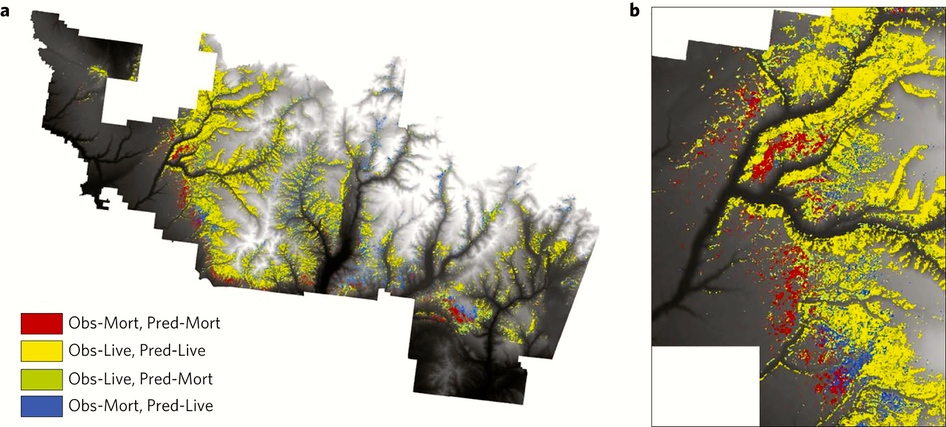
Climate Change and Forest Death
From 2000 to 2003, a drought in the American Southwest triggered a widespread die-off of forests around the region, including many stands of quaking aspen. While the event was associated with drought, scientists didn’t know exactly what caused forests to succumb or how severe conditions needed to be to induce such die-off.
Now, a team of scientists has begun to find out. UC Santa Barbara’s Frank Davis collaborated on the development a new modeling tool to better explain how aspen forests died as a result of the 2000-2003 drought. The researchers’ findings appear in the journal Nature Geoscience.
Previous studies have shown that drought leads to tree mortality by damaging vascular systems that transports water throughout the tree. “The missing piece was an operational measure of drought that could reliably predict when and where aspen dieback would occur,” said Davis, a professor at UCSB’s Bren School of Environmental Science & Management and director of the campus’s National Center for Ecological Analysis and Synthesis.
The threshold for a lethal amount of vascular damage was not previously known in any tree species. By using data from forests in southwestern Colorado, the investigators were able to identify a threshold point for drought conditions beyond which an aspen’s water-transporting vascular system begins to fail.
Conducted for The Carnegie Institution for Science, the new research was supported by a physically based model and verified by testing branches of individual trees in the field. Then the team successfully applied the model to predict regional patterns of aspen dieback during the recent drought in the southern Rockies.
“Drought stress in plants occurs when their demand for water exceeds the supply from the soil,” Davis explained. “Higher temperature raises the demand for water, while less precipitation reduces the supply. Climatic water deficit is an integrative measure of the difference between demand and supply.”
The new findings suggest that if the same processes hold true in the future, by the 2050s drought resulting from climate change will likely cause more widespread die-offs of aspen forests. The likelihood of tree mortality and the conditions that drive it are important because dying forests can radically transform ecosystems, affect biodiversity, harm local economies, pose fire risks and increase global warming.
Davis described two immediate applications of the research. “First, we can apply the hydraulic threshold to identify which quaking aspen populations are at greatest risk from projected climate change,” he said. “The same general approach can then be developed for many other important tree species. Second, the hydraulic threshold provides a way to include climate-driven tree mortality in computer models of the Earth system to improve our ability to project global environmental change.”
Lead author William Anderegg of Princeton University concluded: “Finding the thresholds in plant physiology after which climate stress causes tree mortality will allow us to resolve uncertainty over the fate of forest ecosystems in a changing climate. But most importantly, a lot rides on human decisions to slow climate change. The clock is ticking on the future of these forests.”



